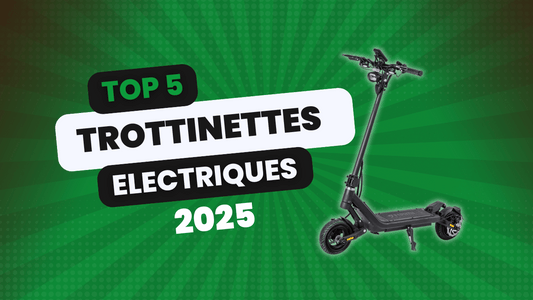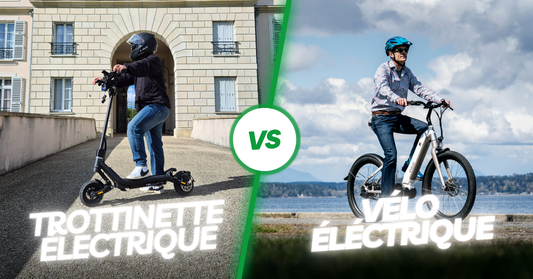Electric scooters, which have become a symbol of modern urban mobility, are experiencing exponential growth in cities around the world. However, this increased popularity comes with concerns about safety, coexistence with other road users, and environmental impact. To address these challenges, France and its European neighbors have established new regulations governing the use of electric scooters.
In this article, we present these recent rules which aim to secure travel while optimizing the integration of these machines in the public domain.
1. Regulations in France
1.1 Speed limitation
In France, regulations now impose a strict speed limit for electric scooters. These machines must not exceed the maximum speed of 25 km/h on public roads. This measure aims to reduce the risk of accidents and ensure harmonious coexistence between different road users.
1.2 Access zones and prohibitions
Electric scooters are banned from sidewalks. This ban, aimed at protecting pedestrians, requires users to ride on cycle paths or roads where they are permitted.
1.3 Equipment obligations
The new regulations require all electric scooters to be equipped with front and rear lights, reflective devices, and a horn. For users, wearing a helmet is strongly recommended, although it is not yet mandatory.
1.4 Regulated parking
French cities have also taken measures to manage the parking of electric scooters. It is now forbidden to park an electric scooter that obstructs pedestrian traffic. Some municipalities have demarcated dedicated parking zones to keep pedestrian spaces clear.
2. What's new in Europe
2.1 Harmonization of rules
The European Union is working to harmonize the various regulations that still vary from one country to another. Many nations are aligning themselves with French standards in terms of speed limits and traffic.
2.2 National initiatives
Countries like Germany and the Netherlands have specific laws in place. For example, in Germany, electric scooters must be registered and insured, while in the Netherlands, users must wear a helmet. These initiatives aim to improve safety and promote responsible use of these vehicles.
3. Ecological and security policies
3.1 Reducing the carbon footprint
In the context of climate emergency, several European cities have introduced programs to encourage the use of ecological means of transport, including electric scooters. This development is part of a global policy aimed at reducing the carbon footprint of urban centers.
3.2 Awareness programs
Road safety education and awareness are at the heart of many governments' strategies. Campaigns are regularly organized to inform e-scooter users about best driving practices and the rules to follow.
4. Impact and perspectives
4.1 Adoption and accessibility
New regulations have impacted the adoption of electric scooters by making their use safer and more regulated. They also create an environment where these alternative means of transport can be integrated into urban infrastructures in a sustainable way.
4.2 Future adaptation
The rules are constantly evolving to adapt to new realities and technologies. In the future, we can expect increased regulation with the rise of micro mobility solutions and the potential introduction of automation.
ConclusionElectric scooters, although recently introduced into the urban landscape, have quickly become part of our daily modes of transport. New regulations in France and Europe are essential to ensure that the use of these vehicles remains safe, respectful and environmentally beneficial.
With these rules, electric scooters can continue to offer an efficient transport alternative, while improving the quality of urban life. As always, cooperation between legislators, manufacturers and users is crucial for a sustainable and safe future.




